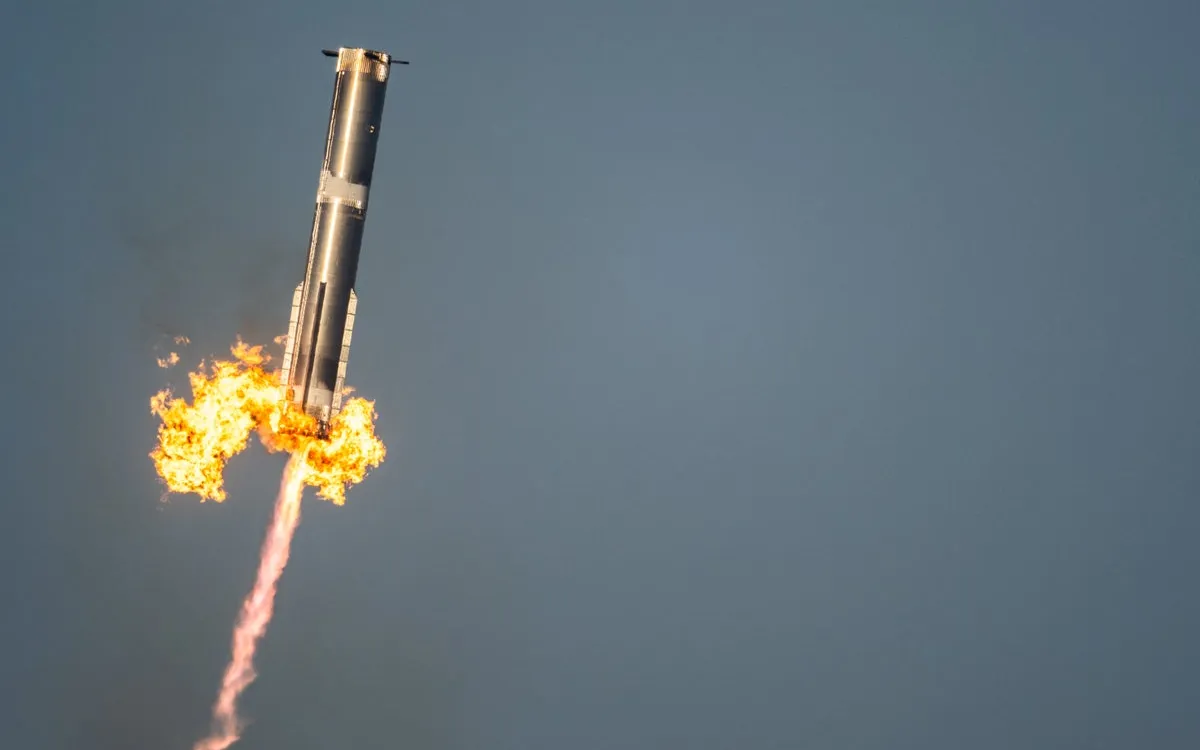
In a dramatic turn of events, Elon Musk’s SpaceX Starship rocket exploded just ten minutes into its latest flight test, marking a significant setback for the ambitious space program. The towering 400-foot-tall (123-meter) rocket launched smoothly from SpaceX’s Starbase facility in Texas on Thursday at 5:30 p.m. local time (11:30 p.m. GMT). However, shortly after separating from the Super Heavy booster, the upper stage of the Starship experienced a power failure in several engines.
Footage captured during the flight showed the Starship spinning uncontrollably before the livestream cut to black, indicating a catastrophic failure. The explosion resulted in a large debris cloud over islands in the Caribbean and Atlantic regions, as reported by CNN. In response to the incident, the Federal Aviation Administration (FAA) temporarily halted flights until 8 p.m. ET due to concerns about falling space debris impacting some of Florida’s busiest airports, including Miami International Airport, as well as airports in Fort Lauderdale, West Palm Beach, and Orlando.
Once flights resumed, many departures faced delays of up to 45 minutes. Additionally, the FAA announced average delays of 30 minutes for flights departing from Philadelphia International Airport due to the presence of space launch debris. SpaceX later confirmed the explosion, describing it as a “rapid unscheduled disassembly.” In a statement, the company assured that their team promptly initiated coordination with safety officials to implement pre-planned contingency responses.
SpaceX emphasized the importance of reviewing the data from the flight test to identify the root cause of the failure. “As always, success comes from what we learn, and today’s flight will offer additional lessons to improve Starship’s reliability,” the statement read. This latest flight test comes just six weeks after another Starship launch concluded with a fiery explosion over the Turks and Caicos Islands.
Elon Musk has been advocating for a rapid testing schedule to expedite the development of the Starship program. Ahead of Thursday's launch attempt, SpaceX stated, “Developmental testing by definition is unpredictable. But by putting flight hardware in a flight environment as frequently as possible, we’re able to quickly learn and execute design changes.”
The eighth test flight was intended to follow the trajectory of the sixth Starship mission, which had previously concluded with the second-stage rocket splashing down in the Indian Ocean as anticipated. SpaceX had outlined several new objectives for this mission, including the historic first-ever deployment of a payload into orbit. During the 90-minute flight test, four dummy Starlink satellites were scheduled for release.
Despite the failure of the upper stage, SpaceX successfully caught the Super Heavy booster using its innovative chopstick mechanism at the Starbase launch tower. The vast payload capacity of the Starship is expected to play a crucial role in delivering SpaceX’s next-generation Starlink satellites into orbit once operational. However, the primary mission of the rocket remains to conduct missions to Mars, with Musk aiming to establish a permanent human colony on the Red Planet by 2050.
To achieve his ambitious vision, Musk plans to construct a fleet of thousands of Starship rockets to facilitate crew and cargo transportation throughout the Solar System. In a related effort, reports indicate that Musk is working to overhaul FAA operations with his SpaceX Starlink system, potentially challenging an existing contract with Verizon.
Controversially, a SpaceX engineer, who also volunteers with the Department of Government Efficiency (DOGE), allegedly threatened FAA employees with termination if they obstructed agency work related to the company. This situation could potentially lead to a lucrative federal contract for SpaceX, further intertwining Musk’s business ventures with government operations.